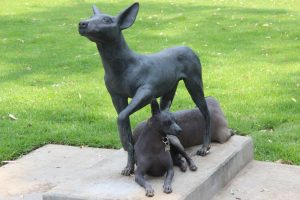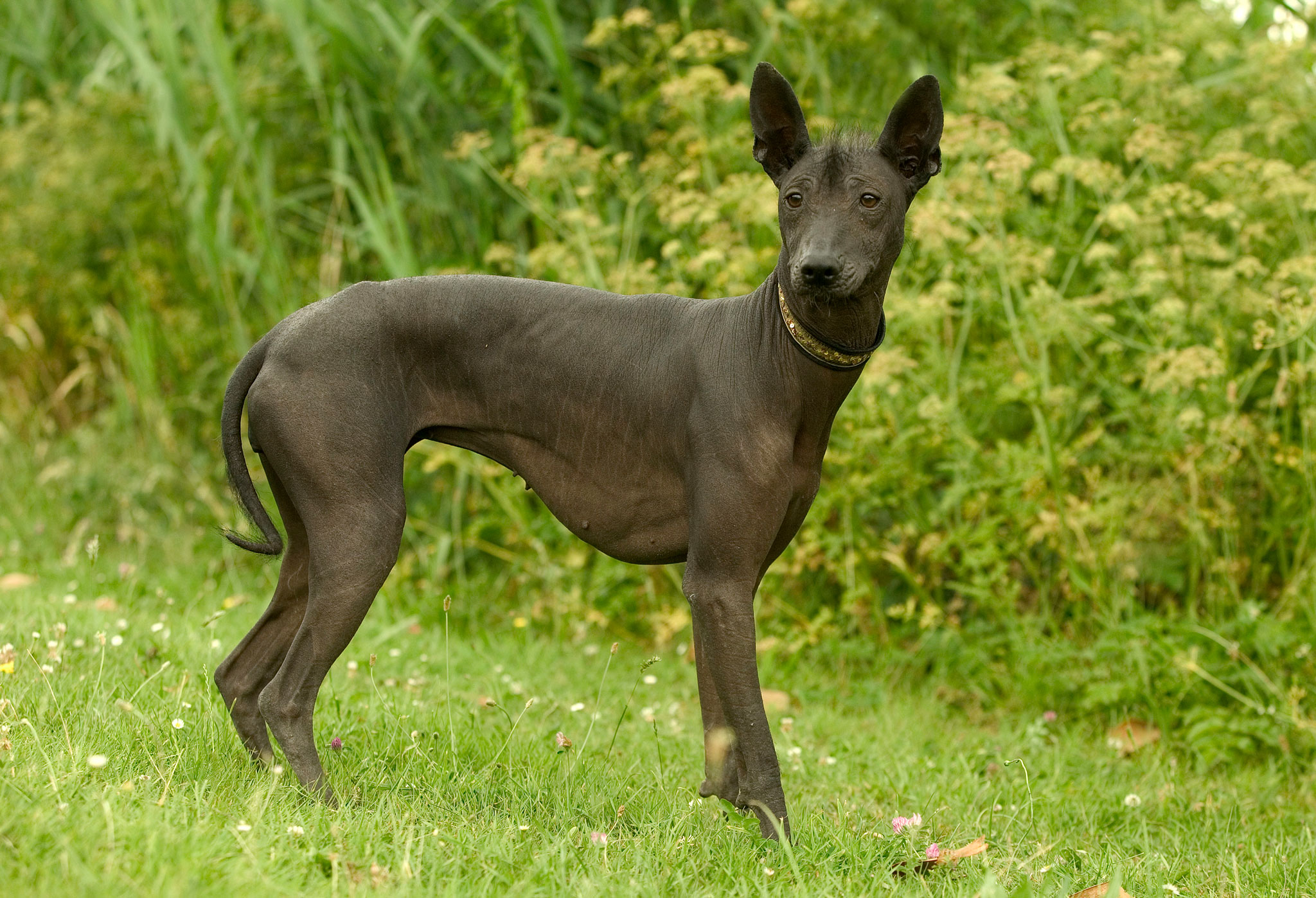 With a history going back more than 3,500 years, the xoloitzcuintli dog played a significant role in Precolumbian life.
With a history going back more than 3,500 years, the xoloitzcuintli dog played a significant role in Precolumbian life.
To the ancient Aztec and Maya, man’s best friend was also a hairless, ugly-cute healer, occasional food source, and, most importantly, guide to the Underworld.
Sometimes known as the Mexican Hairless dog, the xoloitzcuintli (pronounced “show-low-itz–QUEENT-ly”) gets its name from two words in the language of the Aztecs: Xolotl, the god of lightning and death, and itzcuintli, or dog. According to Aztec belief, the Dog of Xolotl was created by the god to guard the living and guide the souls of the dead through the dangers of Mictlán, the Underworld.
 One of the most ancient dog breeds of the Americas, researchers believe the ancestors of the xoloitzcuintli (or ‘xolo‘ for short) accompanied the earliest migrants from Asia and had developed into the breed seen today by at least 3,500 years ago. The xolo’s hairlessness (save for a tuft or two of hair on top of the head or on the tail) is the result of a genetic mutation that is also responsible for the dog’s lack of premolars. This distinctive dental trait makes identifying the remains of xolos in archaeological contexts relatively easy.
One of the most ancient dog breeds of the Americas, researchers believe the ancestors of the xoloitzcuintli (or ‘xolo‘ for short) accompanied the earliest migrants from Asia and had developed into the breed seen today by at least 3,500 years ago. The xolo’s hairlessness (save for a tuft or two of hair on top of the head or on the tail) is the result of a genetic mutation that is also responsible for the dog’s lack of premolars. This distinctive dental trait makes identifying the remains of xolos in archaeological contexts relatively easy.Xolos appear in ancient Mesoamerican art often with pointed ears and wrinkly skin to indicate their hairlessness. The most frequent depictions take the form of small ceramic vessels known as Colima Dogs for the modern state in western Mexico where they are commonly found. In Colima and the neighboring states of Nayarit and Jalsico, archaeologists estimate that more than 75 percent of burials from the Preclassic period (ca. 300 B.C to A.D. 300) contain these vessels, which may have served as symbolic dog guides to help the soul of the dead travel through the Underworld.
These hairless canines also caught the eye of European chroniclers such as Christopher Columbus and the 16th-century Spanish missionary Bernadino de Sahagún, who describes how the Aztecs would tuck xolos in blankets at night to keep them warm. The dogs’ fur-free bodies also serve as excellent heat conductors, making them a kind of ancient hot-water bottle for the ill and the elderly. “They know when you’re sick,” observes Kay Lawson, a 20-year xolo breeder and past president of the Xoloitzcuintli Club of America. “They zero right in to where it hurts.”

